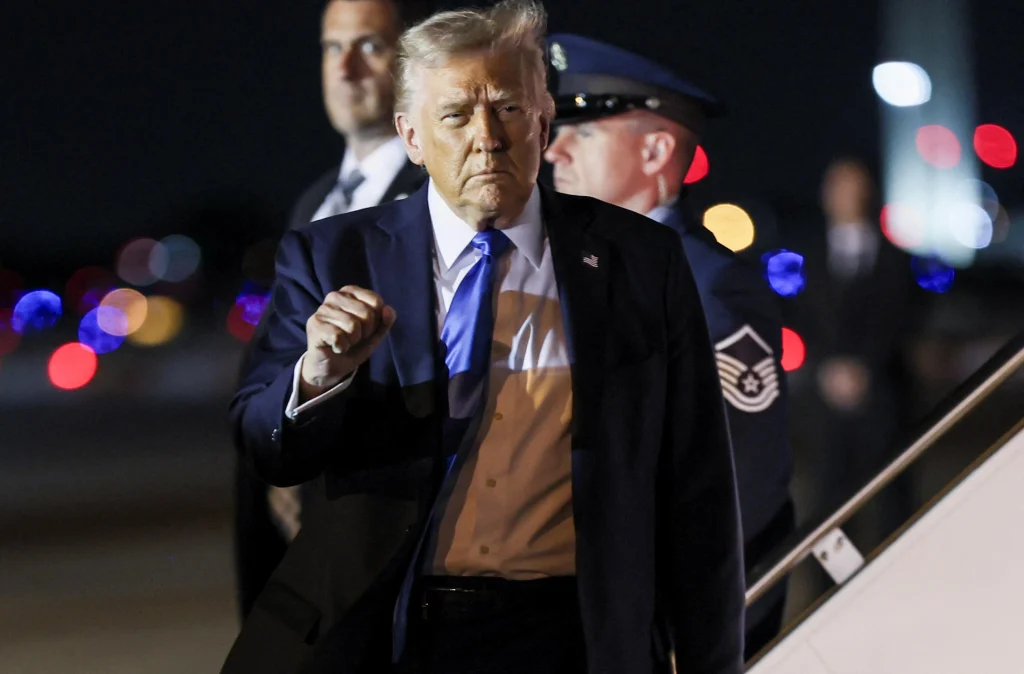US PRESIDENT Donald Trump’s tariff tempest has turned markets upside down, rocking investors globally. This spurred the Monetary Authority of Singapore to cut its 2025 growth outlook, as tariff-driven “demand shocks” slam the trade-orientated economy. What might Trump do next? No one knows – maybe not even Trump himself.
But April’s absurdity offers clear investing lessons: Trying to time markets based on widely known factors is folly. So is selling amid panic.
Fact: Trump’s tariffs are bad – especially for the US itself. This is one reason non-US stocks, including the Straits Times Index (STI), are far ahead in 2025. But fear of tariffs is excessive, priming a market recovery. Here is why.
Stocks can’t possibly anticipate such large, nonsense-born surprises. Take Trump’s new paused, misnamed “reciprocal” tariffs. They have zero linkage to what other nations charge the US. Nothing! The European Union’s average tariff is 2.7 per cent, per the World Trade Organization. Trump hit it with 20 per cent. Vietnam averages 5.1 per cent tariffs. Trump slapped on 46 per cent duties. Stunning!
BT in your inbox

Start and end each day with the latest news stories and analyses delivered straight to your inbox.
They weren’t about non-tariff barriers either – Trump’s advisers didn’t even try tabulating those. No, his reciprocal tariffs stem mathematically from America’s trade deficit with each nation, assuming they show another country is “cheating”. Illogical – and odd, given Trump’s 10 per cent universal tariffs also apply to nations America has trade surpluses with, including Singapore.
Trade balances alone aren’t predictors of economic success, ever. They are mere accounting measures. Countries run deficits for many reasons, including faster relative growth or wealth, allowing them to buy more abroad than they export. This is positive.
Consider neighbouring Germany and France, each other’s largest trading partner. Since 2008, Germany has run huge annual trade surpluses. France has run big trade deficits, yet its overall economic results were slightly better.
Russia runs big trade surpluses steadily. America has run deficits since the 1970s. Which economy is healthier?
That doesn’t mean surpluses like Singapore’s overall trade balance are inherently bad – just that trade balances, themselves, mean nothing to future growth or wealth. They aren’t predictive or causal. Singapore’s history shows it. The city ran overall annual trade deficits consistently from 1975 to 1997, and surpluses since. GDP grew overall in both periods, but averaged faster growth in the earlier, deficit period. Not what you would expect if trade deficits were truly somehow bad.
Then, came Apr 9’s surprise. Trump paused reciprocal tariffs for 90 days on all but China, which he hit harder – and China retaliated.
Trump claims 75 other nations now want to strike “deals”, justifying his delay. That includes Singapore, apparently, which you have seen push for US concessions around pharmaceuticals and semiconductors.
So, what next? Even if all tariffs return, the effect will prove far smaller than feared. Why? First, un-collectability. The capacity to fully collect them doesn’t exist.
US Customs and Border Protection’s tariff collection unit is understaffed, with only 2,500 employees policing hundreds of locations. Hiring and training take ages. Its technology is outdated and never tested at these volumes, while its Swiss-cheese-like processes are easily gameable in many ways.
Hence, its receipts through late April far undershoot Trump’s forecasts – by fully 90 per cent. That will persist as firms find ever more loopholes – whether Singapore “condones” such actions or not.
Then come legal challenges. Universal tariffs clearly exceed the “national emergency” grounds Trump used to enact them without Congressional legislation. Lawsuits are ongoing.
Maybe we do get a flurry of deals, lowering trade barriers significantly – which will be a huge potential upside.
Sharp retaliation beyond China’s could come, but is unlikely. Even China’s has faded some, with exemptions granted for US imports America can’t produce or source elsewhere. That could continue.
So, how should investors proceed? First, ask: What do you know about Trump and his tariffs that millions of others don’t? Anything? Given markets pre-price widely known information, commonly discussed information has little power. Do you possess unheralded, unpriced information about tariffs’ future direction?
In the absence of such unpriced knowledge, you have no basis for trading on tariffs. Yes, the STI is up 13.2 per cent since Apr 9’s low, making “selling the bounce” seem wise to some. But with the fear exceeding the upcoming reality, this looks more like a classic correction than early in a bear market.
Patience is your best asset now.
The writer is the founder, executive chairman and co-chief investment officer of Fisher Investments, an independent investment adviser serving both individual and institutional investors globally


